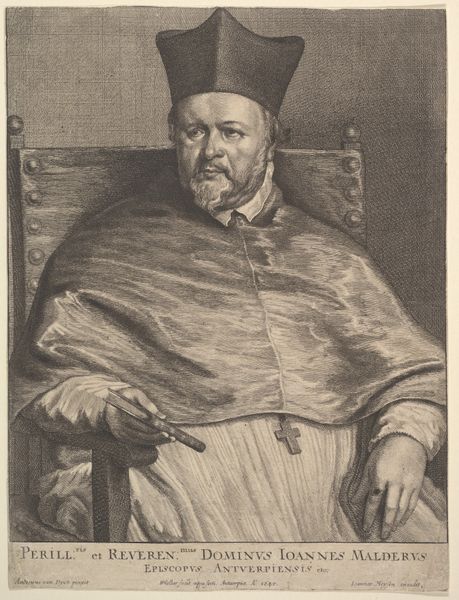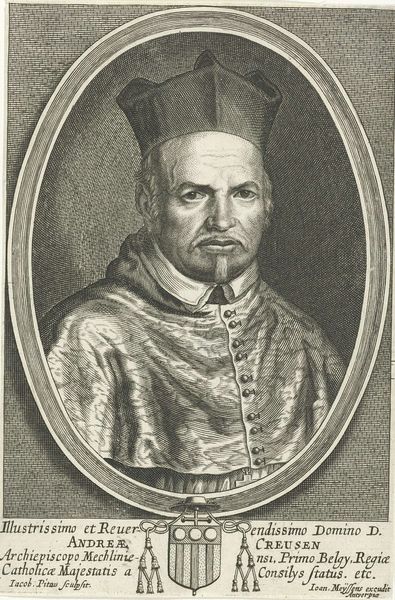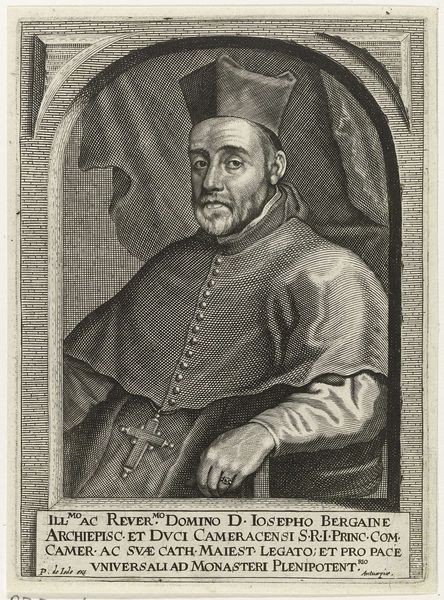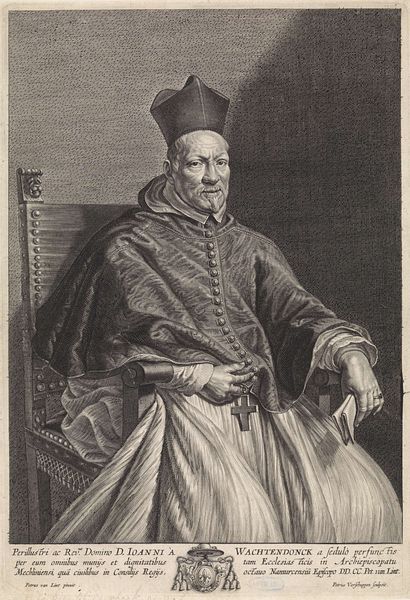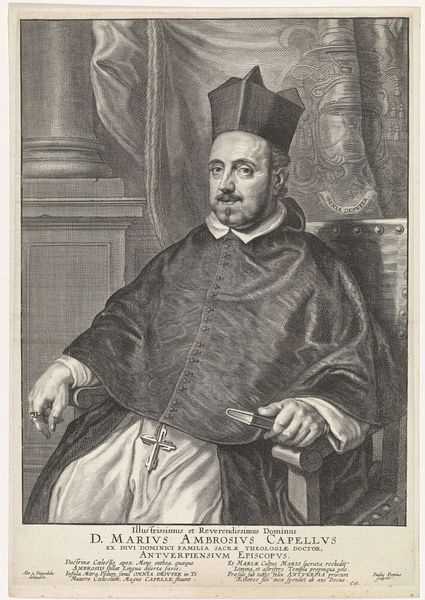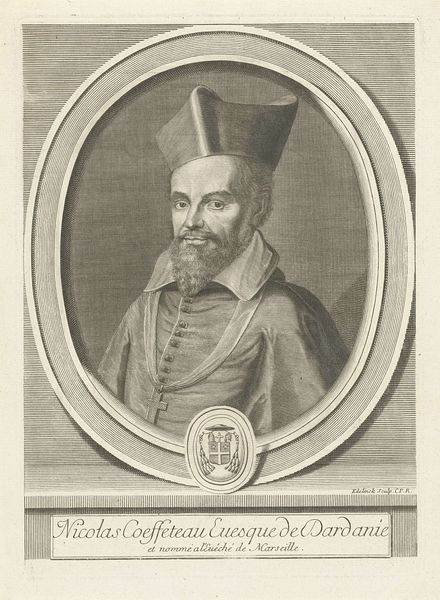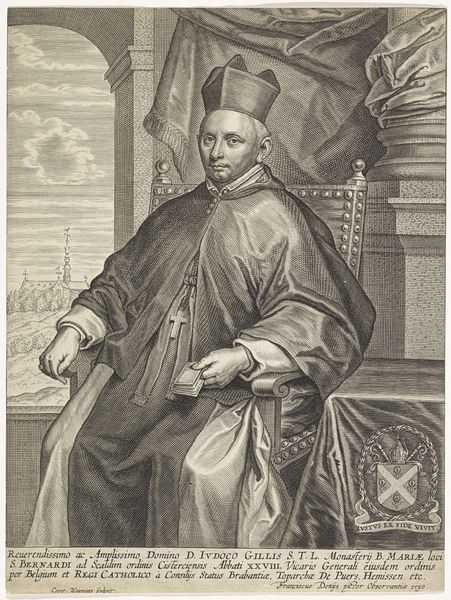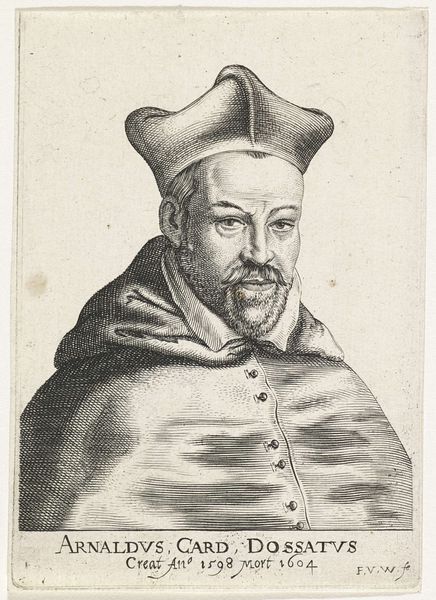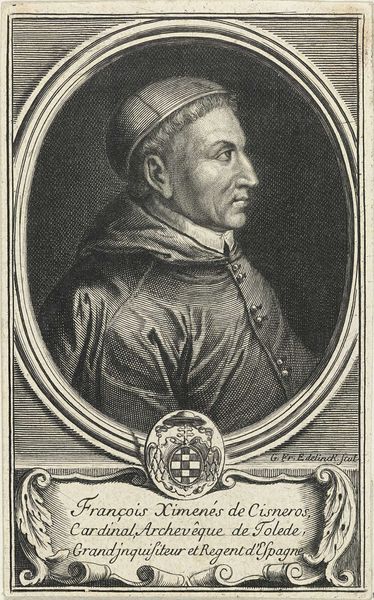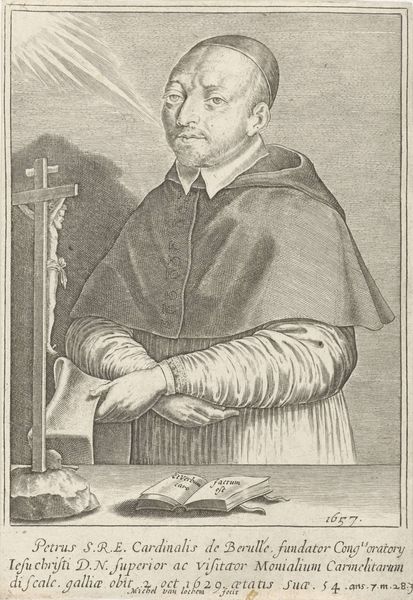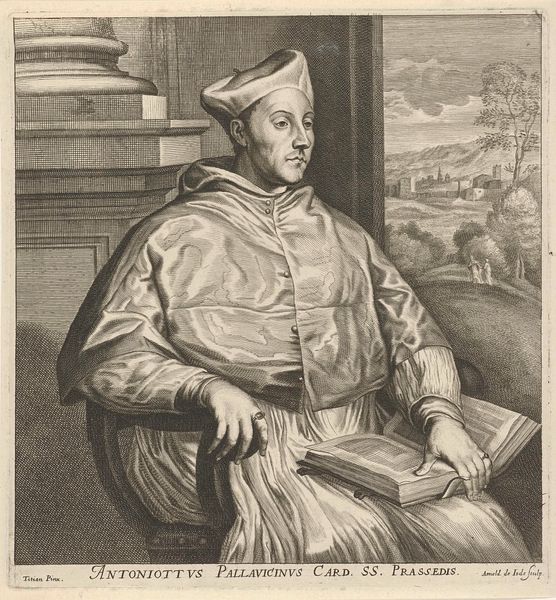
print, engraving
#
portrait
#
baroque
# print
#
history-painting
#
engraving
Dimensions: height 262 mm, width 204 mm
Copyright: Rijks Museum: Open Domain
Editor: This is Adriaen Lommelin's "Portret van Johannes Malderus," made sometime between 1630 and 1677. It's an engraving. I find it fascinating how the artist captured so much detail using only lines. What do you see in this piece, especially considering the social context? Curator: It's more than just detail; it’s about the careful construction of an image meant for public consumption. Lommelin, working from a design attributed to van Dyck, presents Malderus, a prominent religious figure, in a way that reinforces his authority. Notice the symbols of his office, the precise rendering of his garments, even his composed expression. This wasn't simply about likeness. Editor: So, the purpose of the print would not only be for remembrance of Malderus, but also the political reach and influence? Curator: Exactly. Prints like these had a crucial role. They democratized access to portraits of powerful individuals and these images were carefully managed. Think about the political and religious climate of the time – the Counter-Reformation was still very influential. Representing Church leaders in this dignified manner was a deliberate strategy to project strength and stability during periods of unrest and instability. Do you see the weight the cross holds for the Bishop in his vestments, seemingly directing the viewer's eyes toward the text at the bottom? Editor: That’s fascinating. So it's less about the individual Malderus, and more about what he represents within the power structures of his time? Curator: Precisely. By examining its historical and social functions, a print like this reveals the interplay between art, power, and the construction of public image. The portrait format becomes a means for affirming religious and social order, intended for a broad audience. Editor: I never considered the socio-political angle of portrait engravings so directly, thinking instead mostly about aesthetics or individual skill. Curator: The real skill lies in using those artistic choices to participate in shaping the world around the image itself.
Comments
No comments
Be the first to comment and join the conversation on the ultimate creative platform.
